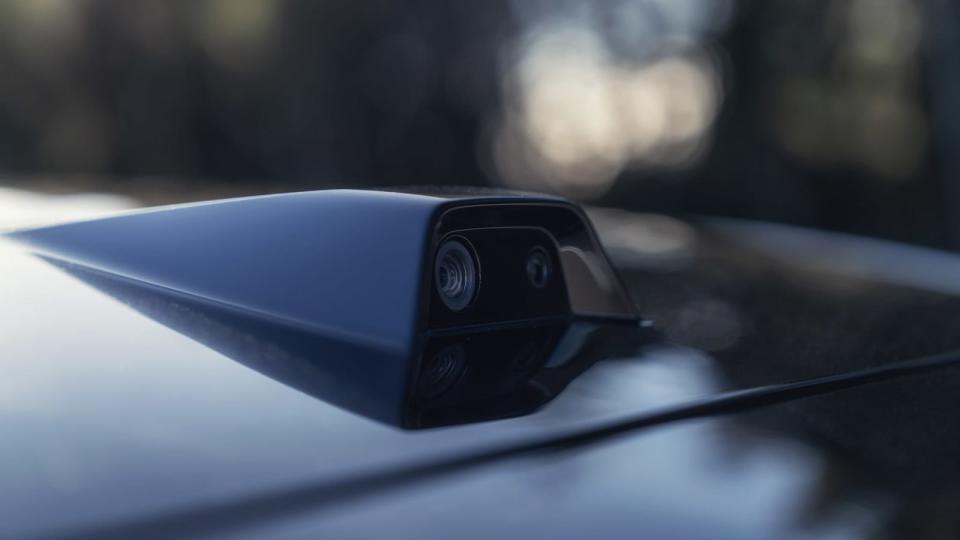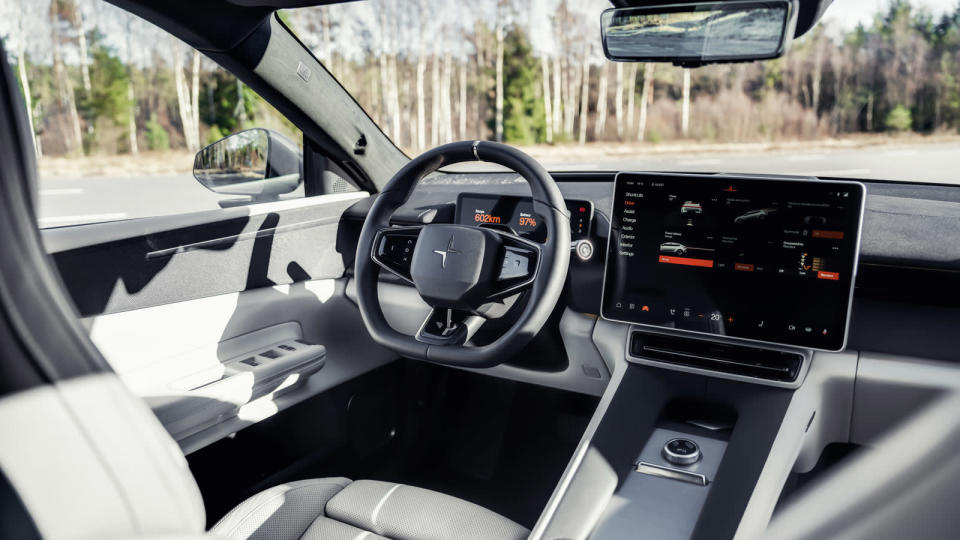Polestar 4 Prototype Review: Don't look back

SANDHULT, Sweden – Categorizing objects lets us organize our world into neat little compartments. Although often highly subjective, it’s how we differentiate a good book from a bad book, a big car from a small car, and a warm coat from one that lets the wind chill your bones. The new Polestar 4 is an outlier in this structure: It’s a multifaceted electric car that’s difficult to accurately put a label on.
Polestar claims the 4 is its second SUV and markets it as a sportier and coupe-like alternative to the Polestar 3. That’s stretching the definition of the term “SUV” like a pizzaiolo preparing the thinnest of crusts. It’s not really a sedan, either – not quite. Fastback? Kind of. Crossover? Sort of. Digging a little deeper into Sweden’s automotive repertoire, in some ways the 4 is reminiscent of the original Saab 900, which was offered as a four-door hatchback throughout its production run, but with more ground clearance.
The name refers to being Polestar’s fourth model, not its placement within a size or price hierarchy, but it is the next step in the brand’s emancipation from Volvo. It’s built on the modular SEA architecture, which also underpins the Volvo EM90 minivan sold in China, but it shares more design cues with the 3 and the Precept concept than with anything you’ll find in a Volvo showroom. It’s a relatively big car: Riding on a 118-inch wheelbase, it stretches 190.5 inches long, 79.1 inches wide, and 60.4 inches tall.


Polestars 3 and 4
Whether or not the 4 earns the SUV label is likely to be overshadowed by a much more controversial matter: It lacks a rear window. This isn’t unprecedented, but the other window-less vehicles you can buy new are those you’d use to move – the Mercedes-Benz Sprinter, for example. This is not that.
So … why did the rear window fly out the window?
“We wanted to have a coupe body style for aerodynamics and at the same time get a really spacious interior,” explains Maximilian Missoni, Polestar’s head of design. Not having a rear window allowed his team to move the D-pillar back. “Another problem with coupes is that (in the rearview mirror) you see a lot of your own interior – you see the headrests and maybe your passengers."
Polestar boss Thomas Ingenlath defended this choice as well, and his opinion carries a lot of weight. While he has run the brand since its launch, he was in charge of Volvo’s design department for years.
“This is not a gimmick. This is not something we did because we wanted to be talked about. We really believe this is a great innovation, which will drive automotive design technology forward.”



Instead of a window and a conventional rearview mirror, there’s a 2.5-megapixel camera integrated into a little alcove poking out from the roof that sends footage to an 8.9-inch digital rearview mirror. The system comes from Gentex, the Michigan-based firm that invented the auto-dimming rearview mirror and that designed the Boeing 787’s dimming windows. Given our experience with such camera-based “mirrors,” most recently in the Volvo C40, we have our doubts about the consistent performance of this system even though Polestar has taken steps to address some obvious concerns. To make sure it’s not rendered useless by rain or road crud, a little spray nozzle can clean the camera, although Polestar also insists the camera won’t get dirty because of where it’s positioned. To make sure you can still give your kids that mean stare, the in-car display can flip down and turn into a normal mirror to let the driver see the rear-seat passengers.
“Mirror” aside, the 4’s interior puts the same focus on minimalism as the 3 without going overboard. The driver faces a digital instrument cluster, and there’s a portrait-oriented 15.4-inch touchscreen for the Android-powered infotainment system, but Polestar retained a steering column-mounted gear selector, integrated the switch that activates the wipers into the turn signal stalk, and put the volume knob (hooray!) on the cool, double-decker center console. Adjusting the air vents requires poking the touchscreen, however, which reflects a trend that’s slowly but surely spreading across the industry even though one of the first to implement it, Porsche, has already abandoned the effort.



 Yahoo Autos
Yahoo Autos 
